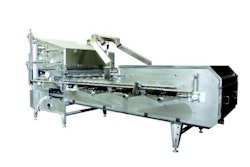Breaking the cycle of excess eggs from Easter to Labor Day has proven extremely difficult. Molting is the most common approach to reduce egg supply. Because the window of molting is at least eight weeks, producers can delay or accelerate the initiation of molting and increase the normal quantity of hens in molt soon after Easter. Although this can quickly get additional eggs off the market, molting does not allow a reduction in overall total supply of eggs due to differences in timing among producers with a variety of molt programs.
If the window of opportunity for molting occurs during a period of low egg prices, losses may be reduced at the same time as egg supply declines. However, molting is much like a two-edged sword. If producers have to molt during periods of high egg prices, they will forgo profits.
Molting may prolong periods of oversupply. For example, molted flocks typically peak at levels about 10% greater than their production at the time of molt. Since the period of oversupply may be longer than 10 weeks, when molted hens return to production, total output will be increased, resulting in an increased supply of eggs when producers still need to reduce supply.
The increased production can significantly offset some of the benefits of leaving houses empty. This potential negative effect of molting is often overlooked because of the anticipation of increasing profits when egg prices increase. As the persistency of lay increases in modern strains (production up to 90% at 60 weeks), the potential economic benefit of molting for individual flocks may need to be re-evaluated.
In the past, hens have typically peaked 10% higher than pre-molt levels which helped offset some of the eggs lost during molt. Therefore, total production would only be about 5% less than that for non-molted flocks. As production persistency continues to improve, the increase in peak production after molt will be nearer to 1%. The greater difference in total number of eggs produced by molted hens compared to non-molted hens could significantly reduce the economic benefit of molting for individual flocks and increase the benefit of molting in supply management.
Balancing the scales
The goal of small-scale producers with a high cost structure is to maintain demand at a level higher than their production capacity. Eggs are purchased to meet needs even in periods of reduced demand. During times when prices are low these producers try to time molting to reduce potential supply to the market while at the same time buying in eggs to help fill orders. In many instances they can generate an incremental profit through marketing purchased eggs at the same time as they may be losing on eggs they produce.
Small-scale producers may be more reluctant to leave houses empty than large producers because leaving even one house empty in addition to molting flocks early could leave them short of eggs even in a down market. Even though they may not obtain a selling price commensurate with variable production costs, the aggregate loss due to added fixed costs attributed to empty houses could be greater than the loss of keeping the hens in production.
It is much easier for large-scale producers to leave houses empty. Even for these operations timing of molting in relation to the market presents real challenges in scheduling and placement. Even when producers elect to deplete flocks early and leave houses empty for a longer period, the rate of flock reduction can be limited by logistic considerations especially with the trend to flocks of 250,000 hens. Failure to have pullets available to re-fill houses could result in producers missing some of the subsequent upswing in egg prices.
Cost vs. demand
Although efforts to reduce egg supply contribute to supply management, changes in egg demand determine price. A small excess in egg supply can significantly decrease egg revenue for generics. During the 3 or 4 weeks following Easter of 2009, egg prices dropped about 60 cents/dozen, not from a sudden increase in hen numbers but because of a relatively larger seasonal drop in demand.
Although the largest recorded drop in egg prices, it should not have been a surprise given the economic situation. What was unusual was the price ratio of energy-to-protein (corn/soy in cents/lb.). Two years ago, who would have guessed that when egg prices dropped from their historic high levels, the energy-to-protein cost ratio would have been close to 0.4?
The reduced cost of crude oil lowered the demand and closely linked price of corn. The more the energy-to-protein cost ratio drops below 1.0, the greater the spread in feed price between two given protein levels. Instead of costing $1 to $2 to increase protein one unit with high prices for corn (high ratio) it can cost up to $6 or more with a low ratio. The current higher spread in feed price along with low egg price is tending to shift dietary specifications required to optimize returns to a lower protein level.
Due to the current low energy-to-protein cost ratio, the industry is losing money not simply because of low egg prices and high feed costs but because of the influence of price spread on the correct nutrient level to feed. Inappropriate formulation can have a significant adverse effect on supply management. Continuing to feed for optimal performance and not optimal return in a market characterized by oversupply is counterproductive.
Applying varying ratios
Currently the cost ratio of corn-to-soy varies from below 0.4 to over 0 .8 among producers. Even though the market price for corn and soy is closer to 0.4, some producers are still working down previously negotiated high-priced grain contracts. Other influencing factors are the cost of alternate ingredients and the number of phases and diets used in a program.
With the low energy-to-protein cost ratios, some of the more efficient producers could easily remove up to 3% or more of their eggs from the market reducing losses up to 1 cent/dozen. The saving in feed cost required to reduce production is greater than the aggregate loss in value represented by reduced performance and increased fixed costs. If all producers fed for optimal returns and not simply performance, especially during periods with low energy-to-protein ratios, it would help control the supply of eggs which is an important determinant of profit.
Nutrition through manipulation
Even at normal energy-to-protein ratios or with relatively high priced corn in relation to soy, the cost of feeding diets containing a protein level required to reduce production by 1% to 3% would still be less than 2 cents/dozen and in many cases only 1 cent/dozen or less. By using nutrition to help control egg supply, hens are still available and ready to resume optimal production when egg prices return.
Using nutrition to optimize performance to a slightly lower level along with molting and leaving houses empty could change the length of time the industry experiences low egg prices. Manipulating or adjusting dietary formulations is simple and quick, and eliminates difficulties in placement and scheduling.
There is a wide range in the standard of production management and formulating capability among U.S. integrators and producers. Because hen performance can be affected by many factors, the influence of nutrition on output and quality are often misunderstood. Some hens managed incorrectly will not lay eggs on target regardless of nutrient level. However, every flock will respond to increasing or decreasing protein levels up to the requirement for optimal performance. Nothing is more important than control over supply. With only a little extra effort, most of the U.S. producers could easily use nutritional manipulation to optimize returns and indirectly assist in supply management. During periods of low energy to protein price ratios, producers can reduce market supply and minimize their losses.

















